The One Dietary Change That Instantly Makes You Lose Weight
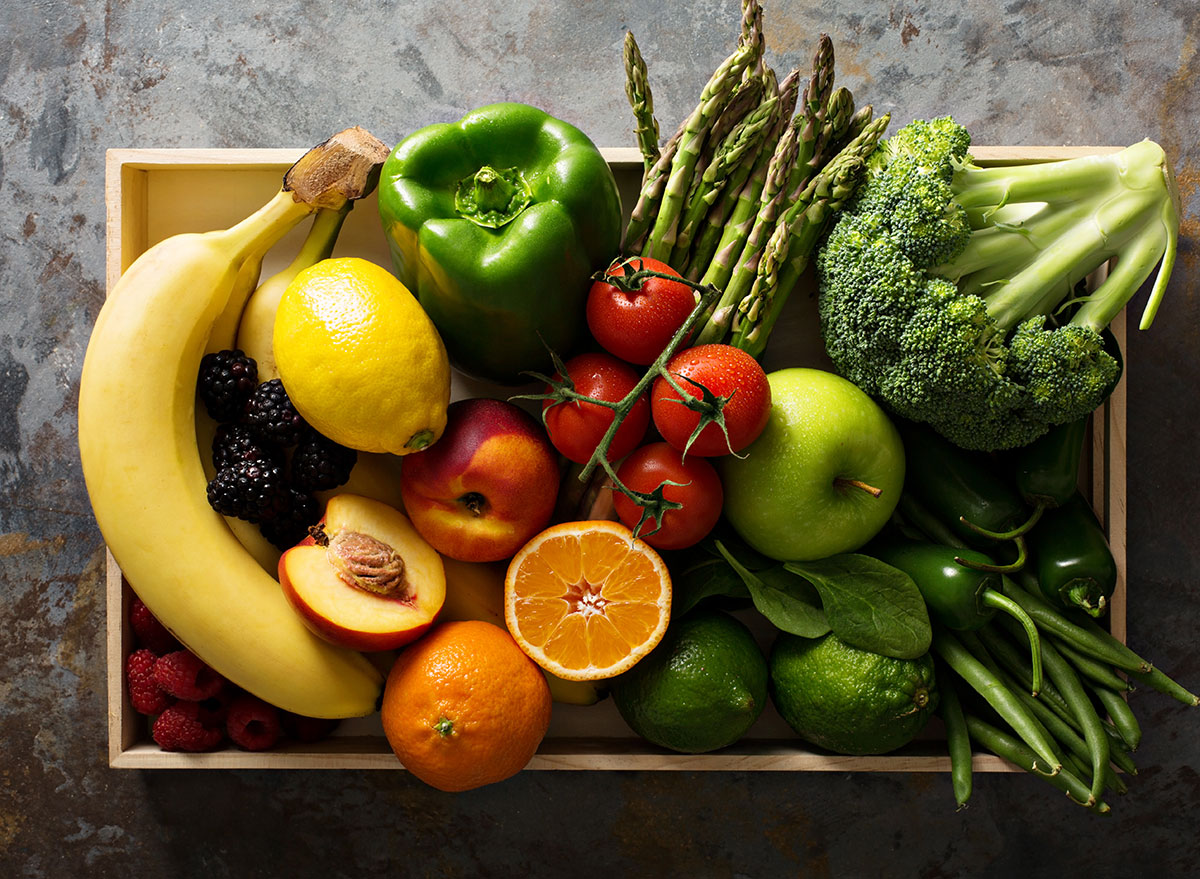
There's a reason every electronic gadget you buy comes with a "quick start" guide. It gets you up and running without having to read the entire instruction manual. The more complicated instructions are, the less likely we busy people will be to read them. Unfortunately, the same goes for diet programs. Complicated guidelines and rules about foods to avoid make dieting miserable and easy to quit—which makes it impossible if you want to instantly lose weight.
If you want to lose weight and begin improving your health and instantly lose weight, here's your quick start guide: just focus on one simple daily goal—adding more color to your meals.
Colorful plant foods contain phytonutrients. These are chemical compounds that give fruits and vegetables their vibrant colors and distinctive flavors. A subset of these phytonutrients are substances called flavonoids, which research suggests offer potent healing properties that protect us from metabolic diseases like obesity, diabetes, heart disease, and cancer.
In a study published by the BMJ, researchers at Harvard T.H. Chan School of Public Health noticed that the people who ate diets high in foods containing lots of flavonoids and related compounds—foods like berries, celery, cherries, radishes, peppers, green tea, pears, prunes, and blueberries—either lost weight or maintained their weight better than people who didn't eat such foods or ate little of them. Other studies suggest that flavonoids may lower fat absorption and actually boost calorie expenditure.
The US Dietary Guidelines recommend eating 2 1/2 cups of vegetables and 2 cups of fruit every day. It's important to try to get as many different colored plants into your meals and snacks as possible because each color provides different types of phytonutrients with different health benefits. That doesn't mean you have to remember the scientific names of those flavonoids, shown below. Just eat a broad variety and you'll cover your phytonutrient bases.
Not sure which foods you should have? Try incorporating foods from the groups listed here, and for even more healthy eating tips, be sure to check out our list of 21 Best Healthy Cooking Hacks of All Time.
The Belly Melters: Anthocyanidins
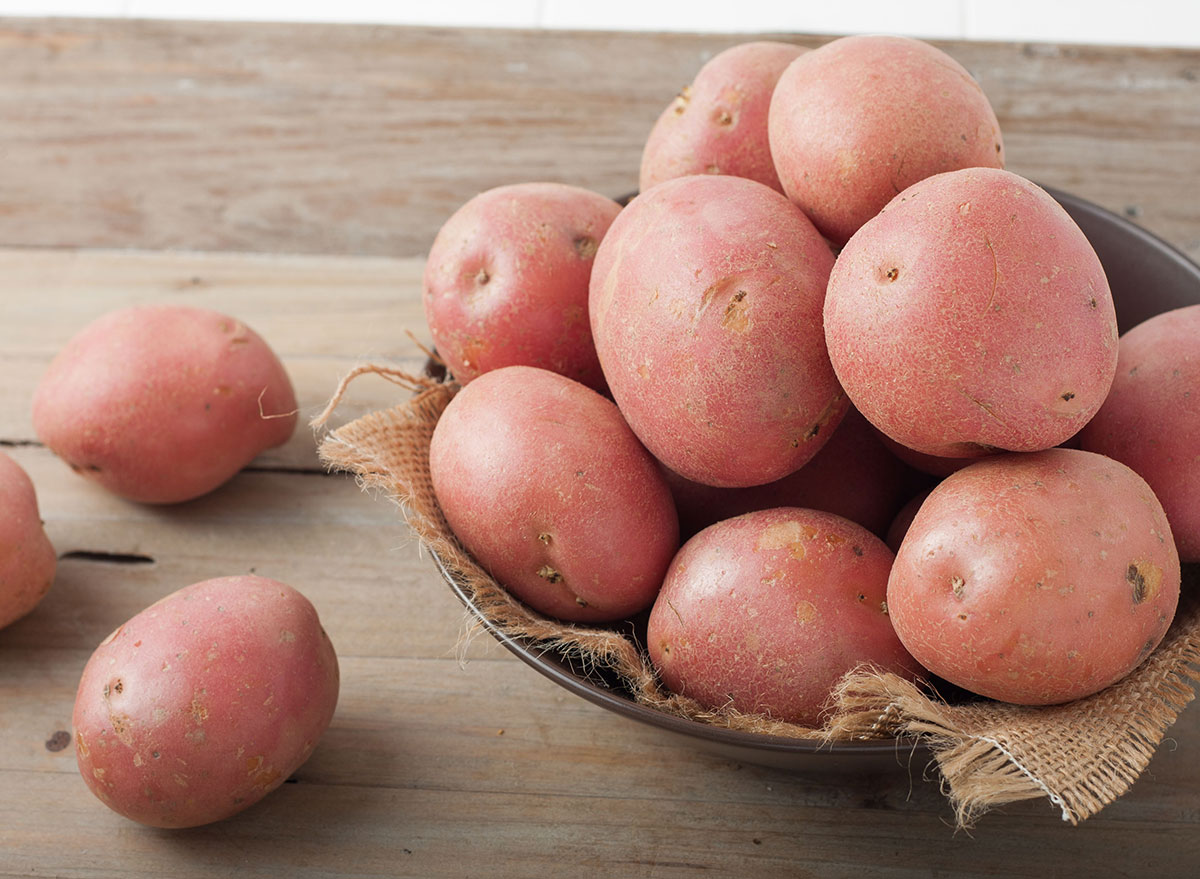
Eat plenty of fruit, as well as these red and purple foods, and you should get all the anthocyanidins you need.
Where to find them: Red potatoes, red onions, red cabbage, beans, eggplant, and chard.
The Heart Helpers: Flavan-3-ols
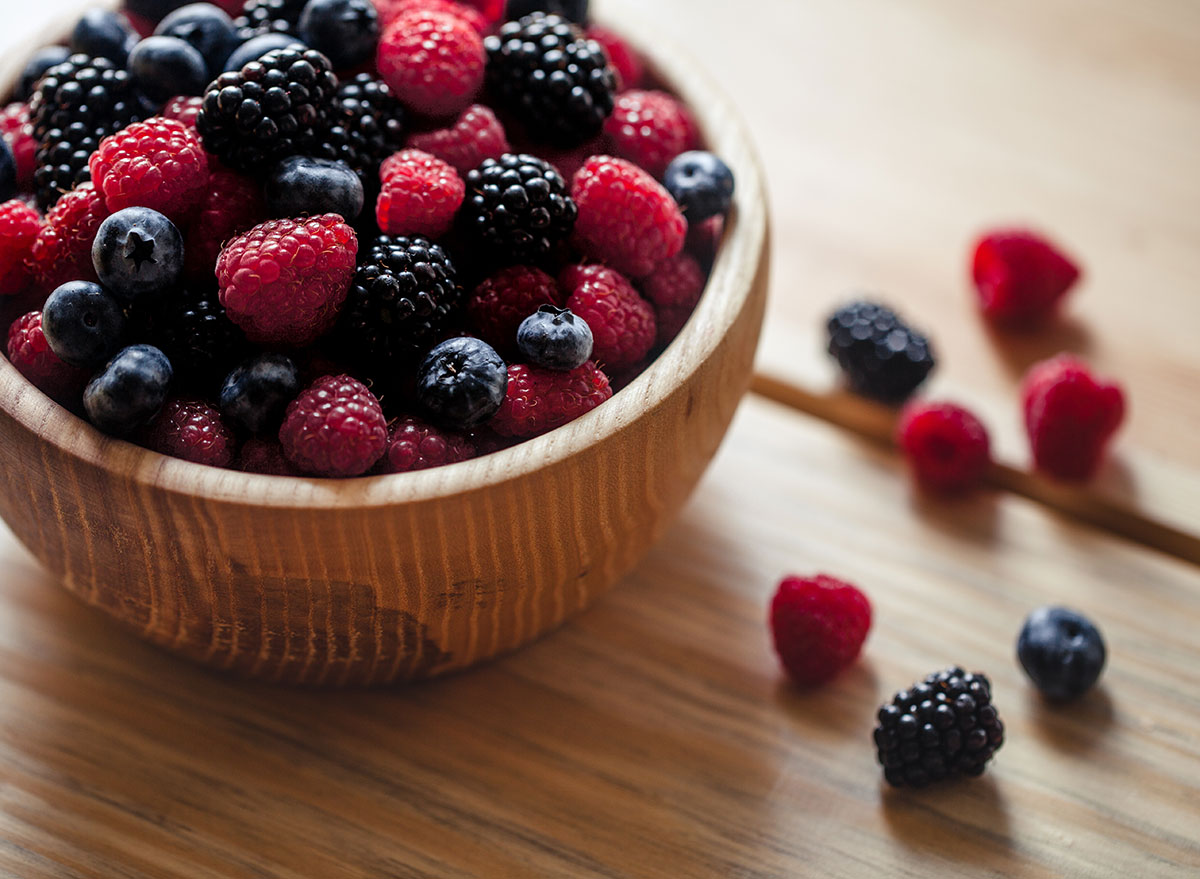
Flavan-3-ols improve arterial flow, reduce blood pressure, and help prevent heart disease and diabetes. In a 2012 review of 42 studies, researchers reporting in the American Journal of Clinical Nutrition found consistent evidence that flavan-3-ols improved cardiovascular risk and reduced diabetes risk. They also have antiviral and cancer-fighting properties.
Where to find them: Flavan-3-ols impart a bitter taste, which explains why they are not only found in berries and tree fruits, but also in high concentrations in dark chocolate, dark beer, tea, and coffee. Among vegetables, only legumes deliver these nutrients.
For more easy ways to lose weight fast, read 19 Eating Habits to Drop a Pound a Day.
The Energizers: Flavonols
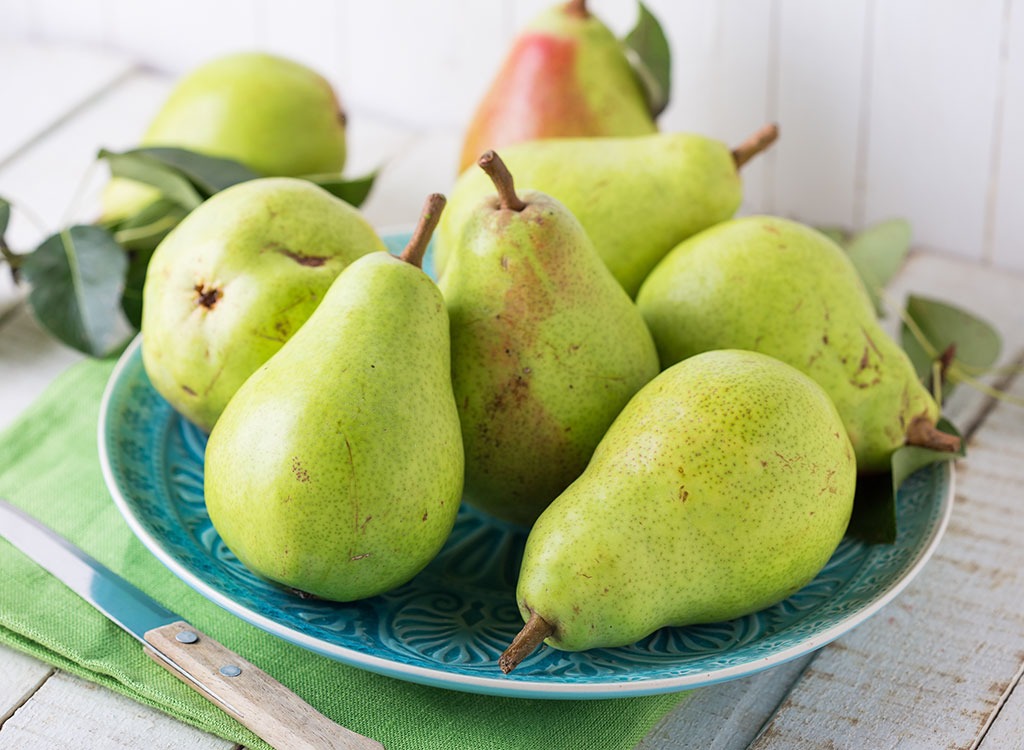
Flavanols may improve both mental and physical performance on tests by boosting overall endurance. They've also been shown to reduce cholesterol and C-reactive protein (CRP), a marker of inflammation. In a 2012 analysis of studies, men and women with the highest intake of these nutrients had an 18% lower risk of heart disease; other studies suggest flavonols may reduce stroke risk by 20%.
Where to find them: Flavonols are pale yellow in color and are found in vegetables like leafy greens, onions, tea, chia seeds, and buckwheat, and in the skins of fruits like apples, cherries, tomatoes, pears, and berries. Discover the 30 best anti-inflammatory foods here.
The Age Erasers: Flavones
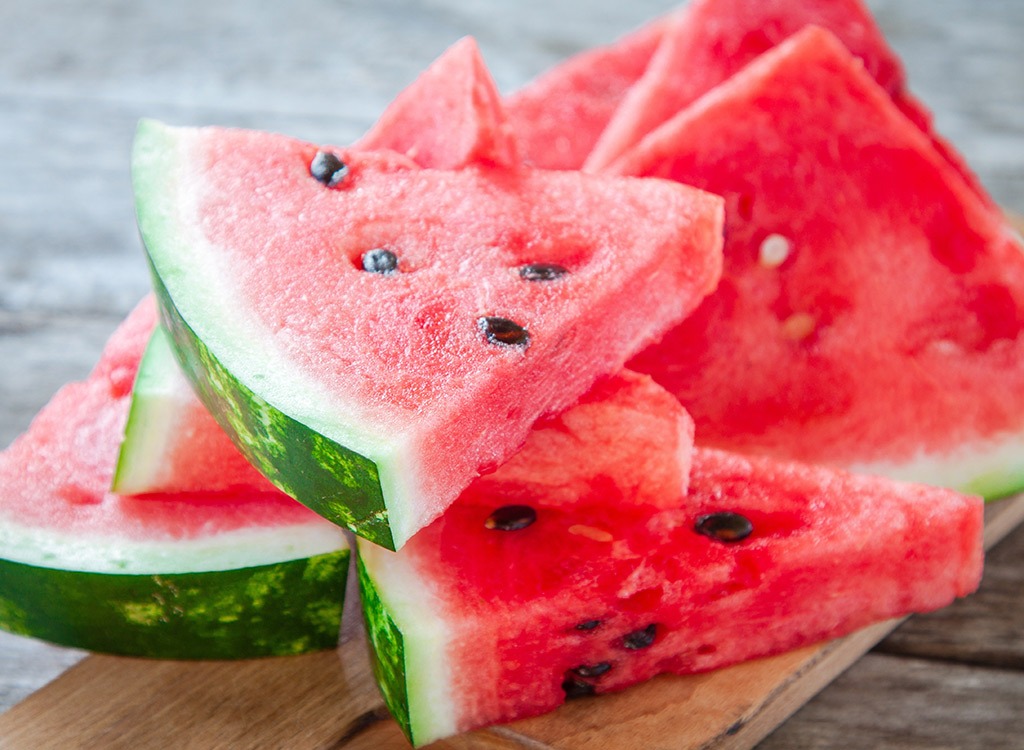
Flavones prevent oxidative stress—what we call aging. They've also been shown to help protect against stress-related diseases, including heart disease, diabetes, and cognitive decline.
Where to find them: A wide variety of fruits, especially watermelon, contain them, as do tea, coffee, and chocolate; cruciferous vegetables like iceberg lettuce, cauliflower, Brussels sprouts, and cabbage, and leafy greens like mint, parsley, and celery. Also found in hot peppers.
The Fat Burners: Flavonones

Flavonones reduce stroke risk and strengthen brain function, reduce appetite, and increase weight loss. In 2009, a study in the journal Diabetes found that a particular flavonoid found in citrus, called naringenin genetically reprograms the liver to burn up excess fat, rather than store it.
Where to find them: Flavonones aren't found in vegetables. You get them mostly from citrus fruits like grapefruits, oranges, lemons, and limes. Peppermint leaves have then, too.
Along with these colorful foods, you can also incorporate these 9 Best Foods That Melt Belly Fat.








